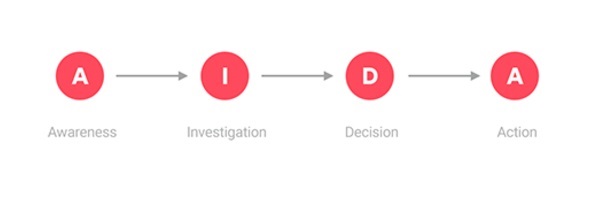
Do you know how demand generation is achieved and why it is such a relevant process to obtain sales? One of the basic objectives of companies is to position themselves as a benchmark in their target market in order to increase their sales and, therefore, their income. But how do they get it?
That is why marketing strategies are developed. Depending on the actions we carry out, we will look for one objective or another, and this is the reason why a marketing plan is drawn up (if you still do not have yours, we recommend this post to get started right away).
One of the objectives for which we usually start is to generate more brand awareness that helps us attract more traffic to our website in order to capture more leads and, therefore, seek to generate more sales.
But what exactly does demand generation consist of? In this post, we want to explain everything in detail and give you some keys so that you can incorporate it into your marketing plan.
What is demand generation?
Demand generation is a process designed to get potential customers to want a certain product or service or, failing that, to feel interest and/or attraction towards them.
To do this, consumers must be aware of a need, realize that the problem to be solved is related to the product or service in question, and understand that this company is a benchmark in its sector.
When does it apply?
It is a widely used marketing technique that needs to improve the positioning of the brand in the market.
The idea of generating demand arises so that, from the marketing department, companies can impact with their strategies and actions at an online or offline level and, in this way, generate more sales.
In the inbound methodology, demand generation is one of the key processes to accompany the prospect on his customer journey.

The starting point is to identify the potential audience, define buyer personas and create awareness about the existence of the product or service. But the process is much more complex than it seems. Let’s see why!
Why is demand generation important?
Demand generation encompasses the entire process of a customer’s buying cycle.
Traditionally, in marketing we tend to place demand generation in the awareness, lead nurturing and sales phases.
However, this process tends to take longer and longer, comprising stages in which it is also a matter of keeping existing customers, reactivating active contacts or those already lost.
In summary, we indicate the main reasons why it is important to invest in a demand generation methodology:
It is a long-term strategy
As we say, it’s not just about getting the right content to the right people at the right time or raising awareness of the benefits of our products or services.
To generate demand effectively, you have to follow a marketing plan and do it from the inbound philosophy with the automation tools that suit you best.
Improve brand awareness, reputation and visibility
Going through a brand awareness and positioning process is a complex and long job. However, customers buy the products and services they know from the brands they trust.
So going through all this is more than necessary because, in this way, the purchases will not be arbitrary and residual, but we build lasting relationships with the clients that interest us.
Allows you to reach new markets
All this is a process in which we constantly have to learn and discover new business opportunities.
The interesting thing is that with a good generation of demand we will be able to cover new markets, cross borders, generate expectations, etc.
Helps improve lead conversion
Demand generation often involves lead generation, which is a key part of the lengthy sales process. If we stay in the mind of our prospect, we will probably encourage the generation of conversations and increase leads.
Demand generation vs. lead generation: how are they different?

Although demand generation could be confused with lead generation, the truth is that they are different aspects.
Furthermore, it is not about choosing between one of the two strategies, demand generation and lead generation are complementary, and we could say that one precedes the other.
To generate demand, once we have identified the buyer persona and defined their needs, interests and pain points, we will have to provide valuable information to the users who visit us.
If these users have reached this content through social networks or through internet search engines, then it is likely that these visits are qualified and have an affinity with the predefined buyer persona.
At the same time, when providing this valuable information, we will have to develop a content marketing plan since the objective is to generate enough interest so that these visitors decide to leave us their contact information and become leads on our website. database. This most likely won’t happen the first time they visit us, so we’ll need to develop insights for each phase of the buying cycle they’re in and try to retain them.
This is how demand generation and lead generation feed off each other, but do you see their differences?
Although demand generation does not always mean lead generation, lead generation does imply demand generation since, without demand, there are no leads.
Take a look at the main differences between both concepts in the following scheme:
In short, demand generation boosts lead conversion.
In fact, before reaching the conversion of qualified leads with great results, you will have had to go through a brand positioning process. In turn, this process implies working on many other aspects related to content creation: generating valuable information that meets the needs of the buyer person, explaining the benefits and solutions offered by the products, arguing the needs of the prospects, telling with referents, transmit values, etc.
How do we put all this into action?
6 Steps to implement a demand generation strategy

These are the main steps to follow to apply a long-term demand generation strategy and their respective stages.
1. Define your goals
The first thing is to be clear about the results you hope to obtain, as this will help you better focus your actions and know what you need.
To establish your objectives, take each stage of the funnel as a reference ( TOFU, MOFU and BOFU ) and place your marketing campaigns in each of them.
Likewise, it is not about getting all possible sales or leads but about following specific and quantifiable KPIs that allow you to track them.
2. Research and develop your buyer persona
To generate demand, we have to empathize with the public we are addressing. That is why in this step, it is essential to carry out an investigation that leads us to define the profile (or profiles) of a buyer persona.
To do this research, the first thing will be to look at the clients you already have. If you have just started the business, the process will take more time, but you can take your main competitors as a reference.
3. Know in depth the purchase cycle of your ideal customer
As the purchase cycle is somewhat complex, it is convenient to study in depth what the ideal purchase cycle would be like until it reaches the sale and, later, the loyalty of our customers. What problems or concerns will your ideal client have in each phase? What opportunities or solutions would you like to find at all times?
Remember that the most generic phases of the purchase cycle that we usually talk about in digital marketing are: attention, investigation, decision and action (AIDA) . But each of these phases has several stages and will depend on how your leads conceive of your company (which is why we return to the importance of demand generation).
4. Plan your content marketing strategy
To carry out our global online marketing strategy it is essential to define a content plan. As we have mentioned, you must generate content for each stage of the funnel, going from the most generic content to the most specialized and most valuable content for our buyer persona.
To gain the trust of your future clients, think that you must position your brand as an authority within the sector, which will require time, research and strategy.
5. Select your main channels
For demand generation to work and be aligned with lead conversion, it is essential to choose the right channels. Where do your potential customers look for information, on which social networks do they have the most interaction?
YouTube, the Google Display Network, social networks… Perhaps the first thing to do is to focus on creating content following good SEO practices to resolve the most common queries that your buyer persona makes on Google. It is then when you can attack the first pain points and direct the themes towards the first stages of the funnel, those in which users seek information and, despite not being prepared to convert, begin to see the brand as a benchmark in the sector. .
6. Use marketing automation tools
On the other hand, keep in mind that it is common for your leads not to follow a linear path through the conversion funnel, so to prevent them from ending up reading content that corresponds to a different stage, you will have to develop marketing automation with specialized software.
As you will have seen, demand generation is a cyclical process that requires planning, study, and measurement time. If you know your buyer persona well enough, you will be able to develop better content strategies, and it will be easier for you to trace their purchase cycle.
So do your research and take your time to develop content that is powerful and engaging enough to influence your leads’ decision-making. Surely, with marketing automation tools, as well as a reasonable interpretation and analysis of data and statistics, you will be able to improve your generation of demand and everything that this implies.